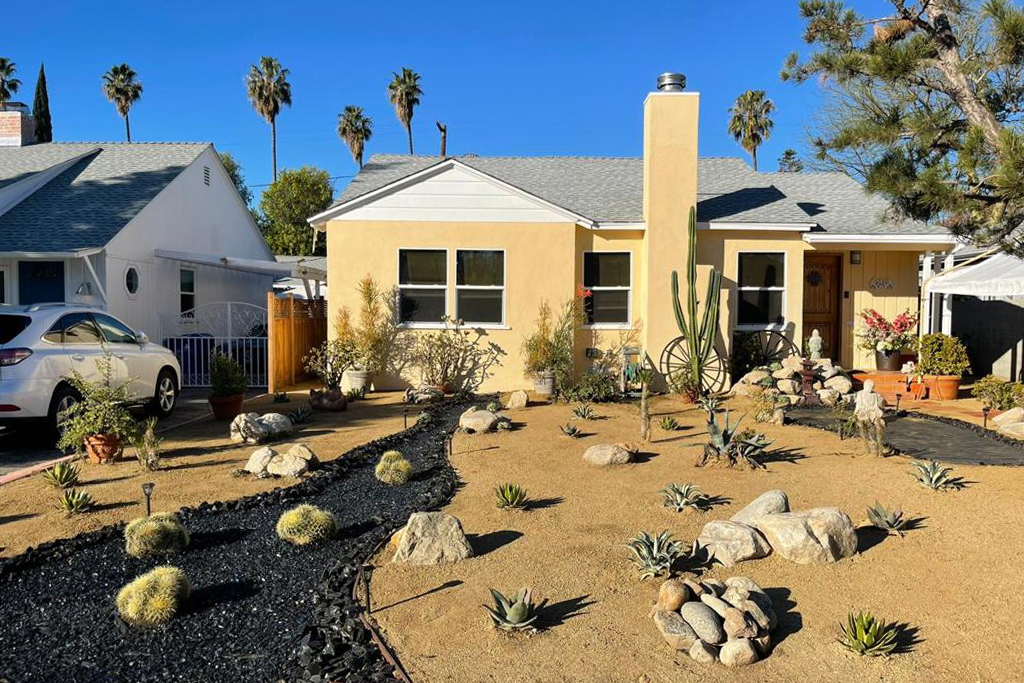How To Reduce Your Water Bill With Landscaping

A big part of your water bill comes from regularly watering your lawn. Lawns need a lot of water to survive, after all, and you definitely don’t want a patchy, dead lawn. But those expensive bills can be a hassle, not to mention a waste of water.
The truth is, you don’t always need to have a lawn that soaks up so much water. You have other options that still leave you with a beautiful-looking home. Whether you use a few drought-resistant plants or get an artificial lawn, here are a few ways to lower your water bill with more water-efficient landscaping.
1. Irrigation
While it can be pricey to install, a drip irrigation system is much better at water retention than other irrigation systems.
You can alternatively use a cistern or rain barrel to collect rainwater to water your lawn. Swales are also great at redirecting rainwater by collecting them in small pools. That water is always free, even if it’s not always abundant.
A smart irrigation system is also a great way to precisely control how much water you use with minimal effort.
2. Plants
Whether you’re full-blown xeriscaping or just switching out some grass here and there, placing drought-resistant plants in your yard can make a big difference in your water bill.
Plants with deep roots use less water. You can even encourage your plants to root deeply through “deep watering” by slowly pouring water over 15 minutes instead of quickly.
Plants native to Southern California use less water than exotic plants. Research what plants are native to your area and have some planted in your yard. Prioritize perennials, as they’re great at water retention. And shrubs and trees reduce water use while taking up more of your yard.
Speaking of plants, consider the soil the plants are grown over. Be sure your soil is properly aerated and not compacted.
Mulch reduces water use and weeds, so place down plenty of it. Grass clippings from mowing can turn into mulch. Place compost, too, as this reduces soil crusting, which impedes the ground’s ability to absorb water.
3. Gravel
Laying gravel over grass is surprisingly helpful when it comes to water retention. The top layer of dirt loses its microorganisms as it dries up in the sun, but layering gravel over the top of it all prevents this loss from happening.
You can even replace your grass with gravel altogether. You don’t need to water gravel, so you’ll never have to pay yard-based water bills.
4. Ponds
Replacing your yard with a pond, believe it or not, can reduce water use. Ponds don’t need to be watered as often as lawns. The only thing you need to worry about is standard evaporation.
It’s even better to cover the pond with shady plants and trees. Planting these reduces the amount of evaporation coming out of the pond. Just try to opt for drought-resistant plants.
5. Artificial Lawn
Maybe you want to keep the look of a large, green, uniform yard. Luckily, you can still keep this look while reducing water use – just install an artificial lawn.
Artificial lawns don’t have to look cheap or fake – plenty of them look just as good as natural grass. And you don’t need to water them every single day. All you need to do is hose them down every once in a while when lawns get dirty. Whether the turf got messy because it is used as turf for sports or fake grass for dogs, you can always clean it up fast.
Not only does fake grass reduce water use, but they also prevent pests from getting into your yard. From squirrels, to ants, to bacteria – life can’t survive off artificial lawns, so you never need to worry about dangerous things living inside.
There are many benefits to artificial lawn services that you might want to consider. It’s one of the few ways to reduce watering to 0% while still having a nice yard.
FAQs
How much water does a sprinkler use in 30 minutes?
Sprinklers use around 20 gallons per minute. In half an hour, a sprinkler will use 600 gallons of water. To eliminate that kind of water use, get a professional to install an artificial lawn.
Is it better to run sprinklers longer or more often?
Longer watering can encourage plants to root deeply, causing them to use less water in the long run. Running sprinklers longer is a better idea.
How long should you run a sprinkler on your lawn?
Run your sprinklers twice a week for about half an hour. Doing this should be enough to grow your lawn without overwatering.
Conclusion
There are many ways to reduce your water bill. And one of the ways to do that is by completely reimagining your yard.
Your yard is a significant water user, but this water use is largely unnecessary. You need to drink water every day, and you need running water in your kitchen and bathroom, but you don’t need to water your lawn. Irrigate well, choose the right plants, or even replace your yard with a pond, gravel, or artificial lawn.
Don’t leave that unnecessary expense on your water bill – have your yard replaced with something that’s a little more water-friendly.




